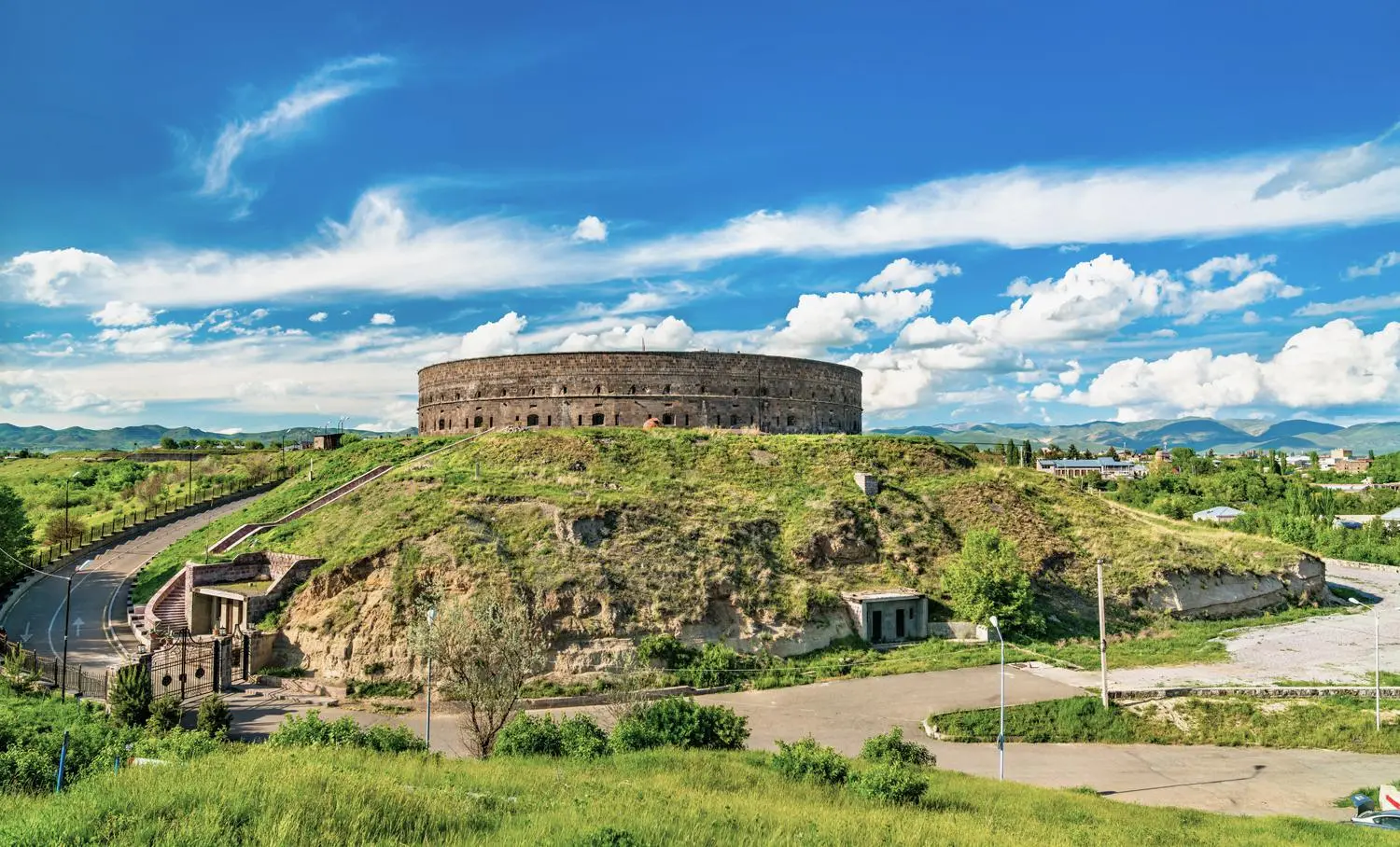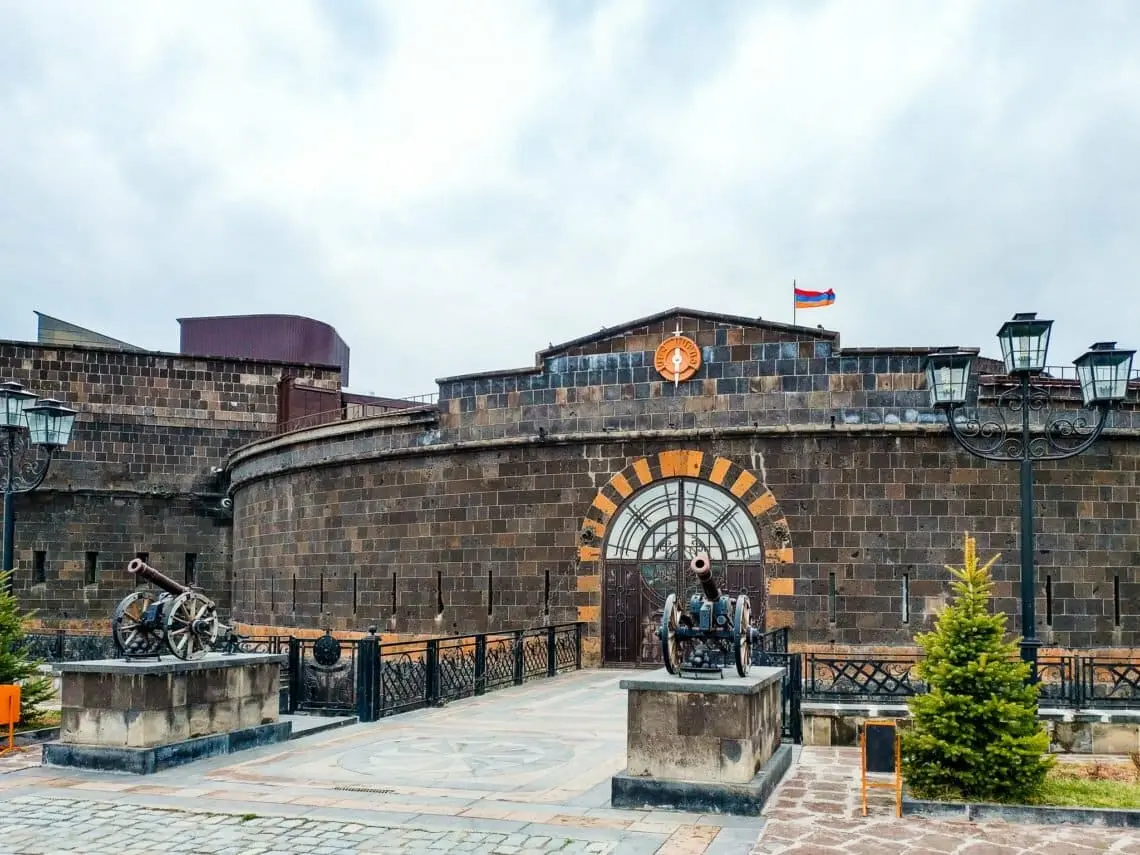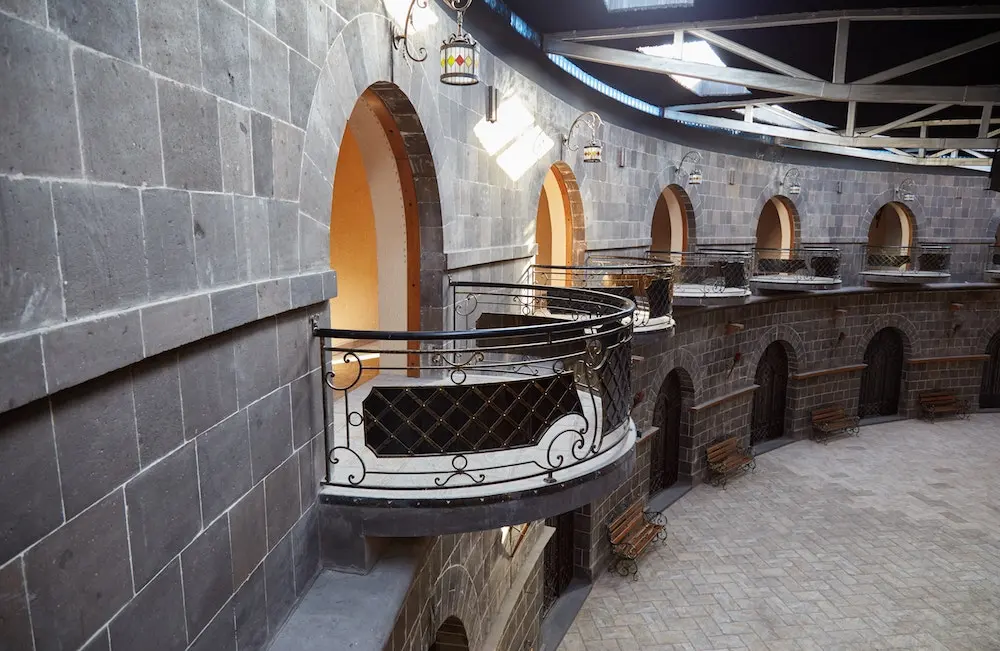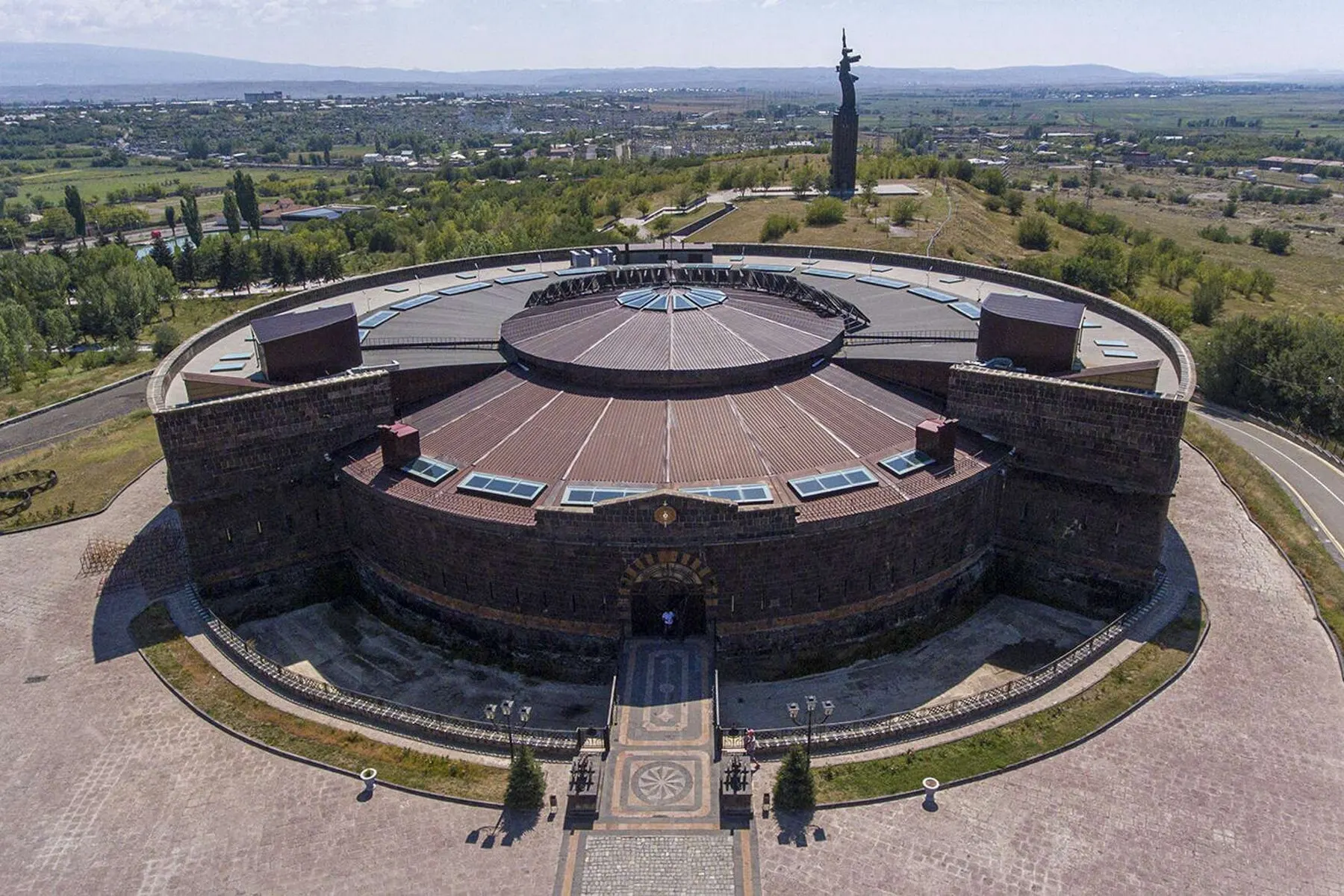On the western edge of Gyumri rises the Black Fortress (Sev Berd) — a striking circular military fort built in the 19th century, whose dark, volcanic stone walls still dominate the landscape with their silent strength.
Historical Background
The fortress was constructed between 1834 and 1847 by order of Tsar Nicholas I, shortly after the Russo-Turkish War and the incorporation of Eastern Armenia into the Russian Empire. Alexandropol (the former name of Gyumri) was located on a highly strategic frontier, and the fortress became one of the most important defensive structures of the region.
During the Crimean War and later the Russo-Turkish War of 1877–1878, the Black Fortress served as a vital military base. It functioned not only as a stronghold but also as a center for troops, supplies, and defense operations.
Architecture and Features
The name “Black Fortress” comes from the material used in its construction — local black volcanic tuff, which gave it a distinctive and imposing appearance. The fortress is circular in design, a relatively uncommon shape for fortifications of the time, allowing for better defense and visibility.
Its massive walls, storage facilities, and barracks were designed to withstand heavy artillery fire. Positioned on elevated ground, the fortress commanded a wide view over the Shirak Valley, ensuring control over approaches to Alexandropol.
Cultural Significance Today
Although it no longer serves a military purpose, the Black Fortress has become one of Gyumri’s most symbolic historical monuments. Over the years, it has been restored and repurposed as a cultural space. Today, the fortress often hosts concerts, art exhibitions, theatrical performances, and festivals, breathing new life into the old walls.
For locals, it represents not only the military past of the city but also its resilience and cultural revival. For visitors, the fortress offers both a glimpse into 19th-century history and an opportunity to experience Gyumri’s vibrant contemporary spirit.
Visiting the Fortress
Located just outside the city center, the Black Fortress is easily accessible to tourists. From its grounds, visitors can enjoy panoramic views of Gyumri’s historic neighborhoods and the surrounding Shirak mountains. At sunset, the fortress is especially captivating — the dark stone glowing under the golden light gives it a mysterious, almost timeless aura.
For travelers, visiting the Black Fortress is more than just exploring a military ruin. It is a chance to walk through Armenia’s imperial-era history, feel the atmosphere of a bygone century, and witness how the city of Gyumri continues to transform its past into a source of cultural pride.





